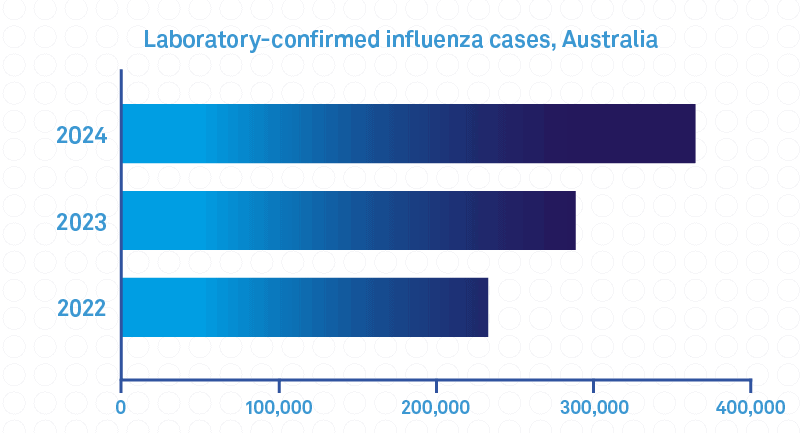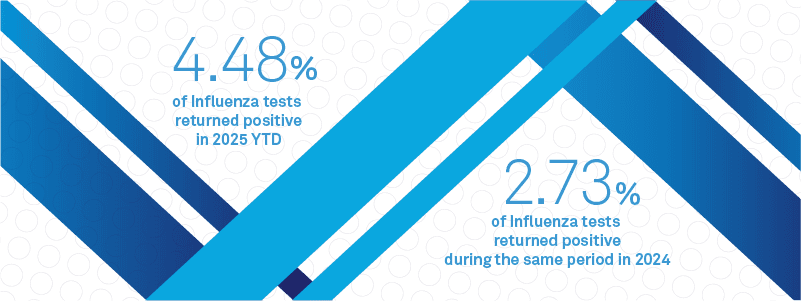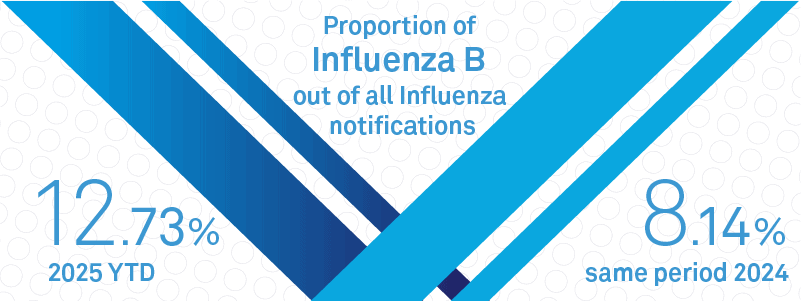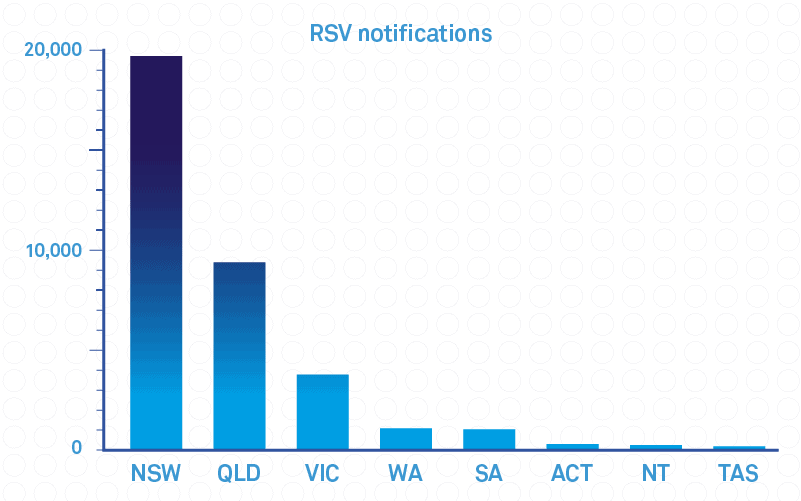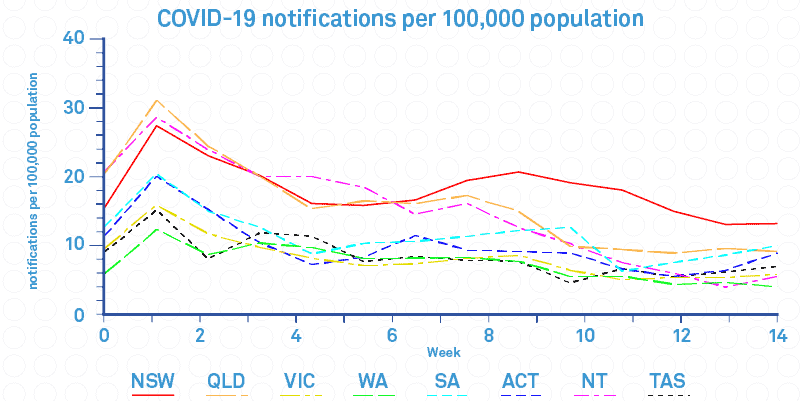Laboratories urged to plan ahead as Australia anticipates another record-breaking respiratory season
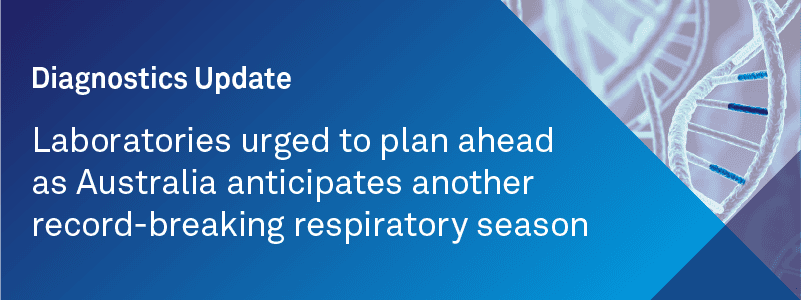
An elevated prevalence of influenza cases and emerging pockets of Respiratory Syncytial Virus (RSV) activity have epidemiologists concerned for a record-breaking respiratory season in Australia.
The added health risks of increased transmission of other leading respiratory infections, in addition to the potential increase in the prevalence of co-infection, may increase the prevalence of coinfections and the burden to hospitals, highlighting the importance of routine syndromic testing for key pathogens.
Influenza
Influenza is typically expected to cause 300,000 primary care consultations and 18,000 hospitalisations in Australia each year. 1
In 2024, Australia suffered its most devastating influenza season in history, totalling 365,602 cases. 29% of those cases (107,066) were reported in July, the most burdensome month. 2
In the first quarter of 2025, Australians experienced a 59% increase in reported influenza cases compared to the same period in 2024. 3 The inflated inter-seasonal baseline has prompted epidemiologists to speculate on a range of factors that could be driving the increase of reported influenza cases. 4
The interim Australian Centre for Disease Control flagged changes to care-seeking behaviour as one potential factor for this increase, whereby an increase in clinical testing for respiratory viruses has occurred since the COVID-19 pandemic. This has incidentally driven an increase in syndromic screening of similar respiratory illnesses. 4 In the 2025 year to date, 4.48% of the 63,000 (approx.) influenza tests returned a positive result, up from 2.73% of 54,000 tests performed in the same period in 2024, supporting the theory of symptom-prompted test-seeking. 5
Travellers to Australia from the northern hemisphere were also blamed as a factor contributing to the elevated inter-seasonal prevalence. The USA experienced its most severe influenza season in more than a decade, with more hospitalisations since the 2010-2011 period. 6, 7
The European Union / European Economic Area (EU/EEA) is recovering from what the European Centre for Disease Prevention and Control characterised as an intense influenza season concurrent with an RSV epidemic. 8
In addition to the elevated prevalence reported in Australia in the year to date, the composition of influenza subtypes has raised concerns over the severity of illnesses expected. The proportion of positive tests attributed to Influenza B rose to 12.73% in the year to date compared to 8.14% in the same period in 2024. 5 The Interim Australian Centre for Disease Control suggests there may be a higher proportion of Influenza B cases in the upcoming respiratory season.
Although Influenza B accounted for 12.73% of positive influenza tests in the year to date, Influenza B has accounted for 18.9% of all influenza hospitalisations at sentinel hospitals, highlighting the need for its coverage in routine screening. Additionally, it underscores vulnerability of children for whom Influenza B typically causes more severe infections. 4
The Immunisation Coalition has predicted only a 29% uptake of the 2025 Influenza vaccine based on its Australian national survey of 25,000 respondents, down from 30.1% in 2024. However, they noted it is too early to report coverage or efficacy data for 2025. 2, 9
RSV
The severity of RSV in vulnerable populations is the prime reason for its status as a notifiable disease. Since the beginning of 2024, 6.43% of paediatric RSV admissions at reporting hospitals included an ICU stay. 10 2024 saw a 37.3% increase in RSV notifications compared to 2023, and prompted sentinel hospitals to commence surveillance for hospitalisations due to RSV. 2
RSV typically has an earlier and broader distribution of outbreaks throughout the year compared to influenza, typically culminating between the months of April and July. 11, 12 RSV activity is already considered moderate as of the most recent reporting period. 4
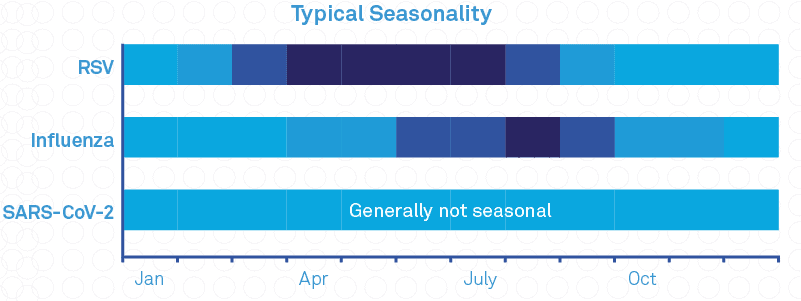
2025 RSV notification data has been dominated by diagnoses from NSW (55%) and Queensland (26.2%). Cases in these jurisdictions have risen sharply in April. 3, 4
Despite the geographical disparity in prevalence, RSV transmission rates in NSW and Queensland have prompted epidemiologists to consider that the national RSV season is already underway. 4
SARS-CoV-2
Unlike similar respiratory pathogens, SARS-CoV-2 transmission is driven by a range of factors moreso than climate, resulting in fluctuations of transmission outside of the typical respiratory season. Understanding these factors can elucidate meaningful forecasts and healthcare insights. The prevalence of SARS-CoV-2 can be predicted using knowledge of emerging variants and their transmissibility and severity, in addition to recognising timing and patterns of intensified travel and socialisation. 13, 14 More recent models attempt to incorporate waning immunity of populations to inform epidemiological responses. 15
The multifaceted nature of SARS-CoV-2 forecasting and improvements to forecasting models presents an opportunity for the diagnostics industry to ensure continuity of service and to maintain a competitive advantage.
Diagnostics considerations for laboratories
The expected prevalence of Influenza and RSV transmission combined with an increased propensity for primary care consultations and testing present a challenge of scale for laboratories this year. Diligent demand-planning and reagent stock monitoring is essential to ensuring continuity of service.
Laboratories may wish to consult with clients to best understand their testing strategies and imminent business priorities. Conversely, presenting their own planning and concerns to suppliers can elucidate new means of support and cooperation, and prompt intelligence sharing for emerging trends in respiratory transmission.
Additionally, the anticipated prevalence of Influenza B reinforces the importance of its coverage, especially in the context of paediatric care. Concurrent testing of Influenza A and B would empower clinicians to deliver informed patient management plans earlier, for improved patient outcomes. Routine screening for Influenza B also supports regional and national epidemiological monitoring and forecasting efforts, highlighting the cyclical relationship between improved surveillance and improved care.
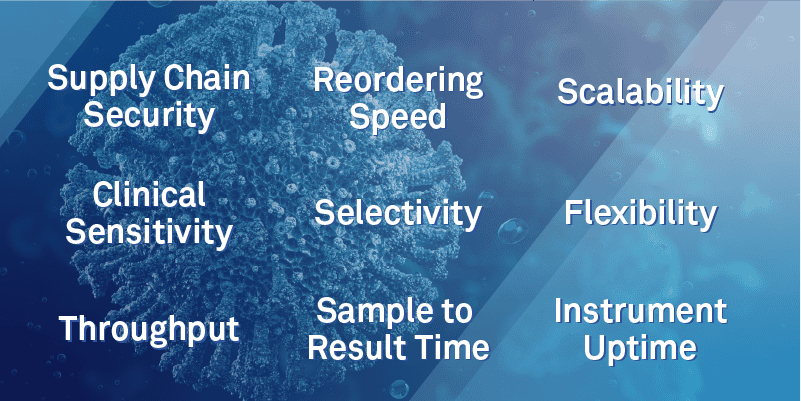
|
Genetic Signatures is accelerating production of EasyScreen™ Respiratory Pathogen Detection Kits to ensure reliable support to our customers this respiratory season. Proudly headquartered in Australia, Genetic Signatures offers the assurance of responsive service and rapid reordering during periods of intensity. |
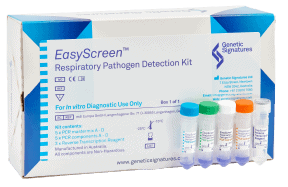
|
During periods of intensified testing, Genetic Signatures’ EasyScreen™ Respiratory Pathogen Detection Kits and automated workflows empower your laboratory with an optional surge testing protocol. Optimised for use on the GS1 instrument, the surge testing protocol increases the sample capacity per run by an additional 33%. The GS-1000 offers a high-throughput solution for up to 188 samples per run.
Contact us for more information on our products and regulatory status in your region. When using our products always read the label and follow the directions for use.
|
|
EasyScreen™ SARS-CoV-2 Detection Kit |
EasyScreen™ Respiratory Pathogen Detection Kit |
EasyScreen™ Extended Respiratory Detection Panels |
EasyScreen™ Atypical Respiratory Detection Kit |
|||
|
Respiratory Pathogen |
(RP012) |
(RP007) |
(RP017E) |
(RP017F) |
(RP017G) |
(RP009) |
|
| Viruses |
|||||||
| SARS-CoV-2 | ● | ||||||
| Influenza A | ● | ||||||
| Influenza B | ● | ||||||
| RSV A/B | ● | ||||||
| Rhinovirus | ● | ||||||
| Human Metapneumovirus | ● | ||||||
| Parainfluenza 1/3 | ● | ||||||
| Parainfluenza 2 | ● | ||||||
| Parainfluenza 4 | ● | ||||||
| Enterovirus | ● | ||||||
| Adenovirus | ● | ||||||
| Coronavirus 229E/NL63 | ● | ||||||
| Coronavirus HKU1 | ● | ||||||
| Coronavirus OC43 | ● | ||||||
| Bacteria |
|||||||
| B. pertussis / B. parapertussis | ● | ||||||
| Mycoplasma pneumoniae | ● | ||||||
| Bordetella pertussis | ● | ||||||
| Bordetella parapertussis | ● | ||||||
| Chlamydia pneumoniae | ● | ||||||
| Streptococcus pneumoniae | ● | ||||||
| Legionella pneumophilia | ● | ||||||
| Fungi |
|||||||
| Pneumocystis jirovecii | ● |
|
Our team of diagnostics experts are standing by to discuss your unique business priorities and assist to determine the best type of support and strategy for your laboratory. |
Infectious disease news unfolds rapidly. Join our network to keep apprised of relevant discussion on emerging outbreaks and business considerations.
   |
|
Was this article helpful? Be the first to receive updates like this. |
For enquiries related to this article, please contact [email protected]

References
-
Australian Government Department of Health and Aged Care interim Australian Centre for Disease Control. “Seasonal influenza for health professionals” 2025. https://www.cdc.gov.au/topics/seasonal-Influenza-health-professionals
-
Australian Government Department of Health and Aged Care. “Annual Australian Respiratory Surveillance Report – 2024” 2025. https://www.health.gov.au/sites/default/files/2025-04/annual-australian-respiratory-surveillance-report-2024_0.pdf
-
Australian Government Department of Health and Aged Care. “National Notifiable Diseases Surveillance System (NNDSS) public datasets”. Accessed April 2025. https://www.health.gov.au/resources/collections/nndss-public-datasets
-
Australian Government Department of Health and Aged Care. “Australian Respiratory Surveillance Report – 24 March to 6 April 2025”. 2025. https://www.health.gov.au/sites/default/files/2025-04/australian-respiratory-surveillance-report-24-march-to-6-april-2025.pdf
-
World Health Organization. “Global Influenza Programme” Accessed April 2025. https://www.who.int/teams/global-Influenza-programme/surveillance-and-monitoring/Influenza-surveillance-outputs
-
The Independent. “One of the worst flu seasons in years will linger this spring, CDC warns” 2025. https://www.independent.co.uk/news/health/flu-season-spring-cdc-vaccine-2025-b2725396.html
-
Centre for Disease Control. “FluView Interactive” Access April 2025. https://www.cdc.gov/fluview/overview/fluview-interactive.html
-
European Centre for Disease Prevention & Control, WHO Regional Office for Europe. “European Respiratory Virus Surveillance Summary” Access April 2025. https://erviss.org/
-
Immunisation Coalition. “Australia Sees Record-Breaking Influenza Season Amid Declining Vaccination Rates” 2024. https://www.immunisationcoalition.org.au/australia-sees-record-breaking-Influenza-season-amid-declining-vaccination-rates/
-
Paediatric Active Enhanced Disease Surveillance. “Paediatric RSV in Australia” Accessed April 2025. https://paeds.org.au/respiratory-syncytial-virus-rsv/paediatric-rsv-australia
-
Neumann, C. & Kawaoka, Y. “Seasonality of influenza and other respiratory viruses” 2022. https://www.embopress.org/doi/pdf/10.15252/emmm.202115352
-
Nixon, J., Freeman, K., Baird, R. “Altered epidemiological patterns of Respiratory Syncytial Virus and influenza detections in a tropical Australian setting 2020 to 2023” 2024. https://www.sciencedirect.com/science/article/pii/S1326020024000475
-
Townsend, J., Hassler, H., et. al. “Seasonality of endemic COVID-19” 2023. https://journals.asm.org/doi/pdf/10.1128/mbio.01426-23
-
Australian Government Department of Health and Aged Care interim Australian Centre for Disease Control. “COVID-19 for health professionals” Accessed April 2025. https://www.cdc.gov.au/topics/covid-19-health-professionals
-
Ghosh, S., Banerjee, M., Volpert, V. “Immuno-epidemiological model-based prediction of further COVID-19 epidemic outbreaks due to immunity waning” 2022. https://www.mmnp-journal.org/articles/mmnp/pdf/2022/01/mmnp220088.pdf

